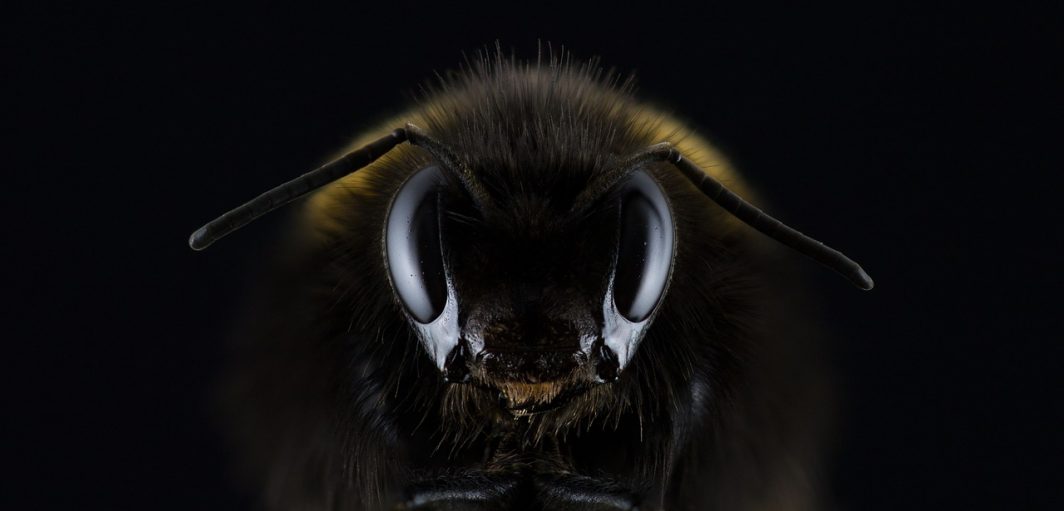There are approximately 250 species of bee in the UK and they can be broken down into two groups – the social bee and the solitary bee. Here’s an overview of each.
Social bees
There are only 24 species of social bee in the UK. The most talked about are the honey and bumble bee, but the most common is actually the Common Carder bee. Social bees live together in colonies and, depending on the species, can be seen between March and November. Each colony will have one queen, who lays the eggs, whilst female worker bees look after the young and collect pollen, water and nectar. Male drone bees don’t have strings, nor do they collect pollen – their role is purely to reproduce. The male and existing queen bee die in the autumn, but the new queens hibernate.
The honey bee is one of the most talked about. This is because it has been semi-domesticated for thousands of years. They live in groups of up to 50,000 all in one hive. They’re known to create wild colonies, in wooded areas around the UK, but most commonly, are found in domesticated hives. The young are reared in the hexagonal cells inside the wax honeycomb and, once a new queen emerges, she’ll sting the other queens to death. She then either takes the place of her mother (who leaves with a swarm) or creates her own colony.
Bumble bees are social bees too, but their groups are smaller than that of the honey bee. Depending on the species of bumble bee, some will make their nests underground in old or in trees, whilst others will be above ground; making use of the old bird nests. They live in groups of between 50 and 150 bees.
There are various types of bumble bee – including the red-tailed, white-tailed, small garden, tree and early bumble bees! Bumble bees play a vital role in pollinating hundreds of different plants species, including crops, here in the UK.
Solitary bees
Contrary to popular belief, the most common species of bee in the UK is the solitary bee – with close to 225 different species! Unlike the social bees, solitary bees live alone. They often make burrows underground, in wood or masonry, where they provide and rear their young, on their own. They can, however, be mistaken for colony bees, as they often make their nests next to each other, if the habitat is suitable.
 There are various solitary bees in the UK, including the leaf-cutter, red mason, tawny mining bee and the biggest (at up to 1.8cm) – the ivy bee. Most commonly, the pupae of solitary bees hibernate over winter, ready to emerge in spring. Solitary bees are particularly important to our lives, as they help pollinate the different varieties of fruit tree, here in the UK.
There are various solitary bees in the UK, including the leaf-cutter, red mason, tawny mining bee and the biggest (at up to 1.8cm) – the ivy bee. Most commonly, the pupae of solitary bees hibernate over winter, ready to emerge in spring. Solitary bees are particularly important to our lives, as they help pollinate the different varieties of fruit tree, here in the UK.
They have a shorter lifespan than the social bees but, depending on the species, can be seen between March and November.
Bees are on the decline in the UK, but you can do your part to help them, by providing them with the habitat they need. Look to plan nectar-rich flowers, wildflowers and fruit trees in your garden, avoid using heavy toxic sprays and pesticides, and raise the notches on your mower, to lift the cutting blades by a couple of centimetres!
At the Grim’s Dyke we plant whole sections of the gardens with wildflowers such as poppies, echinacea, and cornflowers to attract bees. The best months to see lots of varieties of bees at the hotel is between June and September.


